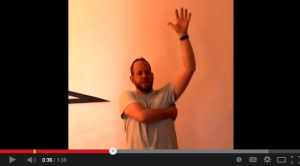 I have written about the lattissimus dorsi, or the lats, a number of times lately. The lats are a very hard muscle to access and make good use of. Pull ups, an exercise that is all about the lats, are one of the most difficult exercises to master.
I have written about the lattissimus dorsi, or the lats, a number of times lately. The lats are a very hard muscle to access and make good use of. Pull ups, an exercise that is all about the lats, are one of the most difficult exercises to master.
I have been writing mostly about wheel pose in all of the previous backbending posts so I will continue with that here but these same thoughts apply in every pose. Each and every muscle has a specific placement and function and our yoga practice is at our best when we get closest to balancing our opposing muscle groups as they try to work together.
The psoas, piriformis and latissimus dorsi are the only muscles connecting the extremities to the spine. Any poses that involve extending the spine, especially wheel pose, requires the alignment and engagement of all of them.
You can get up into wheel without using your latissimus dorsi. Plenty of students do. Going up into the pose without engagement of the lats will make you rely on the exact opposite action than what you are hoping for. Instead of opening the chest as you extend the arms, the front of the shoulder will rotate inward forcing all of the work to the outside rather than the inside which I equate with the core.
If you go into wheel and your elbows are wide to the outside of the wrists it is much harder, if not impossible, to engage and use the lats successfully. The engagement and use of the lats opens the front of the chest, and enables the successful shortening of the front body and lengthening of the back.
Just as letting the knees open wider than the ankles compress the sacrum— letting the elbows move wider than the wrists compresses the shoulder socket and the pectoral muscles.
Again, the psoas, piriformis and latissimus dorsi are the only muscles connecting the extremities to the spine. They all need to be aligned and working properly for a healthy yoga practice and a healthy ageing practice.
***
